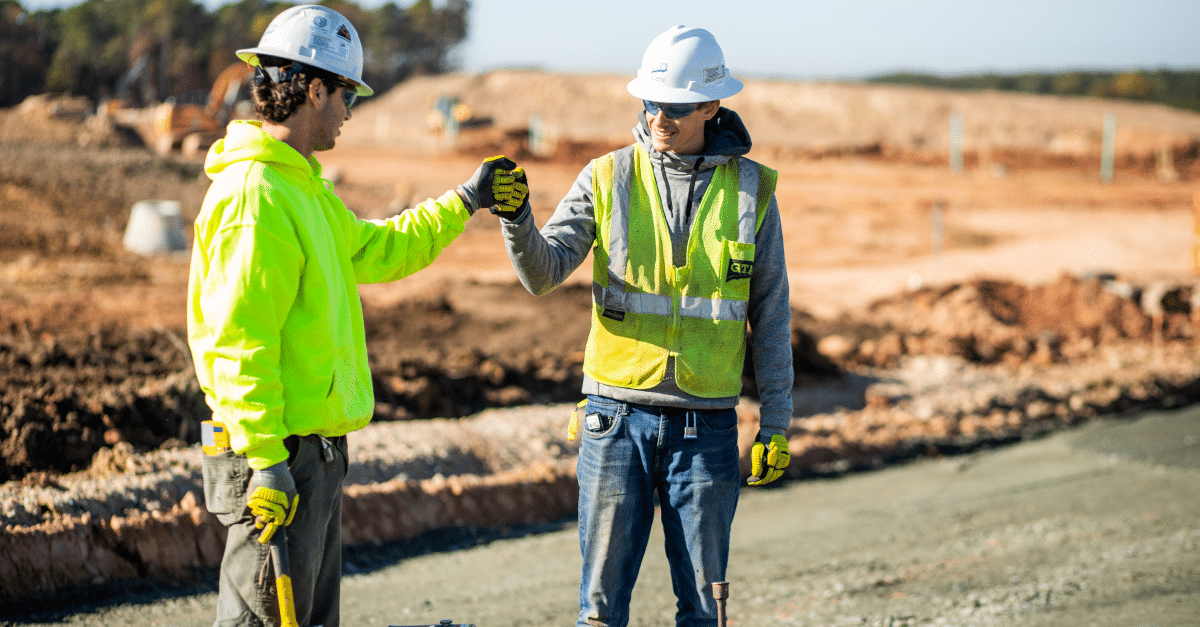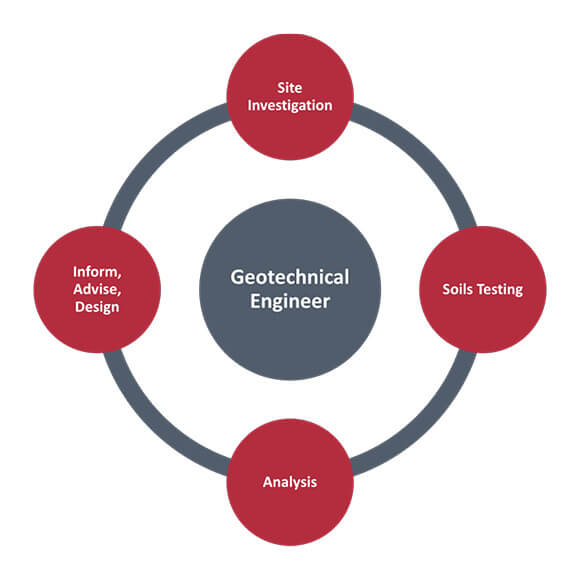Specialized Geotechnical Engineering Solutions Fundamentals Explained
The 8-Second Trick For Specialized Geotechnical Engineering Solutions
Table of ContentsThe Ultimate Guide To Specialized Geotechnical Engineering SolutionsSpecialized Geotechnical Engineering Solutions for Beginners8 Easy Facts About Specialized Geotechnical Engineering Solutions ShownSpecialized Geotechnical Engineering Solutions Things To Know Before You Get This
They carry out site examinations, collect samples, execute laboratory examinations, and examine data to evaluate the suitability of the ground for construction projects. Based on their findings, geotechnical engineers give suggestions for structure style, incline security, retaining frameworks, and reduction of geotechnical dangers. They collaborate with various other professionals, such as engineers, structural designers, and building and construction teams, to guarantee that geotechnical considerations are integrated right into the total job style and execution.
Structure Layout: Geotechnical engineers play an important role in designing foundations that can securely sustain the intended structure. They assess the dirt conditions and load demands to determine the proper foundation kind, such as shallow structures (e.g., grounds), deep structures (e.g., stacks), or specialized methods like soil renovation. They take into consideration aspects such as negotiation restrictions, birthing ability, and soil-structure interaction to create optimum structure styles.
The Of Specialized Geotechnical Engineering Solutions
Below are some types of geotechnical designers: Foundation Engineer: Foundation designers concentrate on developing and examining foundations for structures - Specialized Geotechnical Engineering Solutions. They examine the dirt conditions, load requirements, and website features to figure out one of the most proper foundation type and design, such as shallow structures, deep foundations, or specialized techniques like heap structures
They execute area screening, collect examples, and analyze the gathered data to define the soil homes, geologic formations, and groundwater problems at a website. Geotechnical Instrumentation Designer: Geotechnical instrumentation engineers concentrate on surveillance and gauging the behavior of dirt, rock, and structures. They mount and keep instrumentation systems that keep track of factors such as soil negotiation, groundwater degrees, slope motions, and structural displacements to analyze performance and supply early cautions of potential concerns.
In the office atmosphere, geotechnical engineers utilize specialized software application tools to carry out estimations, develop layouts, and analyze data. Specialized Geotechnical Engineering Solutions. They prepare reports, review project specs, interact with customers and group members, and coordinate task tasks. The office setting supplies a helpful environment for research study, evaluation, and collaboration with other professionals involved in the task
They frequently go to task websites to conduct site visit homepage examinations, examine geotechnical problems, and collect information for analysis. These visits include traveling to different locations, in some cases in remote or difficult terrains. Geotechnical designers may execute soil tasting, conduct examinations, and display building and construction tasks to make sure that the geotechnical elements of the task are being executed correctly.
More About Specialized Geotechnical Engineering Solutions
Geotechnical designers also work in specialized geotechnical research laboratories. Geotechnical laboratory designers function extensively in these settings, managing screening devices, operating instruments, and videotaping data.
Retaining Wall surfaces: Creating wall surfaces that keep back soil to avoid landslides and provide security on sloped surfaces. Embankments and Earthworks: Designing embankments for roadways, trains, and dams to ensure they stay steady under tension. The mining sector relies heavily on geotechnical engineering to make sure the safety and security and Continued long life of its procedures.
With this in mind, we have developed our program to prepare students for success. Geotechnical designers are entailed in all phases of the style of structures, from idea to building and construction. Their job is vital in the layout and planning procedure as they evaluate the honesty of dirt, clay, silt, sand, and rock, prior to building beginning.
Everything about Specialized Geotechnical Engineering Solutions
This is followed by a ground investigation based upon the findings of the desk research and includes trial pitting and sampling to reveal any possible concerns. Geotechnical designers work within multidisciplinary teams, supported by intermediate and junior designers in addition to by CAD professionals. As a senior geotechnical designer on a hydro plant task, jobs may consist of joining technical testimonials (e.g., peer testimonials), tailings dam evaluations, dam safety and security testimonials, and other research studies connected to the design and building of mine waste centers.
While some professionals are experts only in geotechnics, others may work under titles like engineering rock hound or ground designer within comparable capabilities. As a geotechnical designer, you'll need to: develop and keep connections with clients and other professionals associated with the website, throughout each projectmaintain security requirements on website bear click over here now in mind expense implications when you make recommendationsstudy geological maps and aerial photographs from a series of sources and from different time periodsexamine building prepares to see how feasible they are based on your understanding of the siteinvestigate dangers or geological risks for the sitesearch for environmentally delicate attributes, such as land fill start to develop valid and expository ground modelsplan area investigationsdrill and evaluate samples of bedrock, dirt, groundwater and extra products supervise other professionals on sitesolve technical concerns as they emerge, such as unexpected structures at drill sitesmonitor conditions throughout and after building and construction to ensure structures are stable in the short and long termadd data collected on site to your preliminary researchcreate geotechnical calculations, illustrations, and two or three-dimensional computer system models analyzing the datamake recommendations regarding the recommended use the site.
There are great deals of opportunities to fulfill brand-new individuals, as you'll deal with a series of professionals at every site. The work can be stressful as you may be accountable for the safety and security of others while on site. There is likewise a high degree of financial obligation, as the recommendations you make can have significant cost implications.
